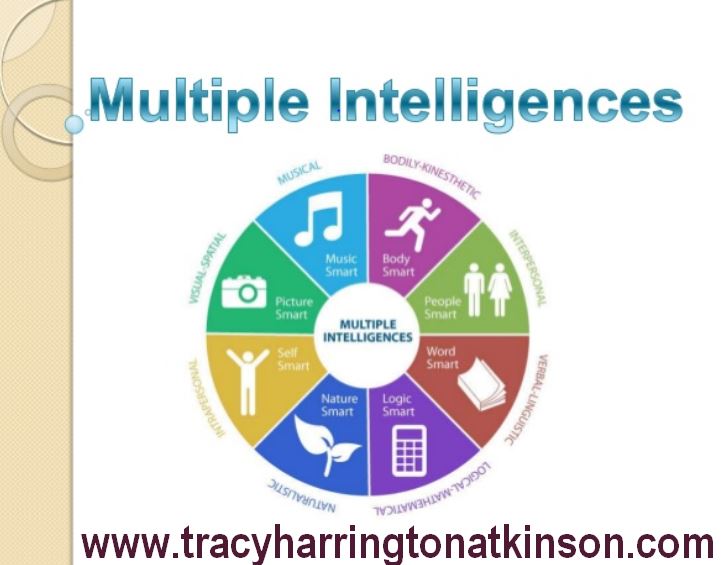 Learning Styles and Multiple Intelligences
Learning Styles and Multiple Intelligences
Gardner (2006) investigated the cognitive differences within intelligence which makes an individual unique. He proposed that there was more than simply one intelligence but a variety of eight individual intelligences which were identified in his earlier works including verbal/linguistic/verbal, logical/mathematical, visual/spatial, bodily/kinesthetic, musical/rhythmic, interpersonal, intrapersonal and naturalistic (Ornstein & Hunkins, 2009). Later, Gardner offered a ninth intelligence of existentialist (Cortland, 2012) which explores the confidence of an individual relating to the existence of mankind and especially in regards to the meaning of life. Through the understanding of multiple intelligences, instructors can “highlight the importance of the individual student” (Gardner, 2006, p 51) providing students with an opportunity to sense their value and worth through the molding of lessons. Students experience more success and greater desire to continue on to be successful students and to develop into lifelong learners (Gregory & Chapman, 2007).
Learning Styles
The linguistic or verbal learner is a learner who best focuses their learning experiences through reading, writing or even speaking. This learner is exceptional adept at using language. They are capable of quickly memorizing dates, places and trivia through saying, hearing and even seeing the written words while the logical and mathematical learner works best through numbers and enjoys the challenge of classifying, organizing and working with relationships as well as abstract patterns. This type of learner particularly enjoys problem solving. Spatial learners also prefer problem solving but instead of using logic, like the mathematical learner, they use the visualizing, mapping and working with pictures.
Bodily/kinesthetic and musical learners share some of the same qualities such as movement and rhythm. They differ, however, in that the kinesthetic learners consistently move and tinker with items. They will touch, move and experiment within space. They process information through their bodily sensations.

Click on image for the Multiple Intelligence Choice Board
Interpersonal and intrapersonal learners are precise opposites. An interpersonal learner is extroverted with many friends and people with which they communicate. They will use others to help them to sort through information. They will learn best in group settings where they can share and compare. They also describe themselves as pulling their personal energy from association with others. This is in direct opposition to the intrapersonal learner who will work alone. They will prefer to work individualized projects and enjoy self-paced instructional methodologies, deriving their energy from solitary activities.
The last of the original eight intelligences is the naturalistic learner relates to the awareness and observation of the world around them especially within nature. These learners prefer to be out of doors as they orient themselves to the world surrounding them. They are particularly proficient at classifying, ordering and identifying artifacts in the natural world.

Click on image for pdf.
Based on Gardner’s work of multiple intelligences, cognitive theorists investigated the probability that people had different “ways of thinking and learning methods” (Ornstein & Hunkins, 2009, p. 127). These varied approaches or learning styles connected with multiple intelligences assist the individual in how they learn. They alter experiences, identify the method with which information is retrieved and even can change chosen words. They also change the way students internally represent experiences, the way information is recalled, and even the words chosen.
As with all theories, there are associated disadvantages. Researchers have determined that there is ultimately little to no hard scientific evidence of the existence of these individual learning intelligences as Gardner’s research was qualitative in nature. Other disadvantages include the lack of a definitive terminology for ‘intelligences’ prior to the investigation of the differences in addition to the inability to describe the determinations and influences in order to develop specific intelligences. Lastly, Gardner’s theory fails to examine the reasoning for the varying degrees of overall intelligence as some individuals are more intelligent than others (University of California Berkeley, 2014).
In contrast to the disadvantages, the benefits accentuate the qualities embedded within Gardner’s multiple intelligences theory such as the theory being based on clinical and educational evidence through qualitative measures. This theory also explains the ability of individuals to excel in some situations and struggle in others, especially within a mental performance capability. Another advantage is the added information provided to individuals and instructors on which areas students may need additional help (Haley, 2009).
Sources
Association for Psychological Science. (2009). Learning styles debunked: there is no evidence supporting auditory and visual learning, psychologists say. Retrieved February 4, 2014 from https://www.psychologicalscience.org/index.php/news/releases/learning-styles-debunked-there-is-no-evidence-supporting-auditory-and-visual-learning-psychologists-say.html

Click on image.
Cortland: State University of New York College at Cortland. (2012). Multiple intelligences: Howard Gardner. Retrieved from web.cortland.edu/andersmd/learning/MI%20Theory.htm
Gardner, H. (2006). Multiple intelligences. New York, New York: Basic Books.
Gregory, G. & Chapman, C. (2007). Differentiated instructional strategies: One size doesn’t fit all. (2nd edition). Thousand Oaks, CA: Corwin Press.
Haley, M. (2009). Understanding learner-centered instruction from the perspective of multiple intelligences. Foreign Language Annals, 34(4), 355-367.
Ornstein, A. C., & Hunkins, F. P. (2009). Curriculum: Foundations, principles, and issues. Allyn & Bacon.
Perry, W. G. (1999). Forms of ethical and intellectual development in the college years. San Francisco: Jossey-Bass.

For other learning styles: MBTI Learning Styles – A Practical Approach Available in paperback; Kindle; and pdf versions
Rapaport, W. (2008). William Perry’s scheme of intellectual and ethical development. Retrieved January 13, 2012 from www.cse.buffalo.edu/~rapaport/perry.positions.html
Researchers at the University of California Berkeley. (2014). Learning theory and research of cognitive constructivism. Retrieved February 4, 2014 from https://gsi.berkeley.edu/teachingguide/theories/cognitive.html#perry
By Tracy Atkinson
Tracy Atkinson, mother of six, lives in the Midwest with her husband. She is a teacher, having taught elementary school to higher education, holding degrees in elementary education and a master’s in higher education. Her passion is researching, studying and investigating the attributes related to self-directed learners. She has published several titles, including Calais: The Annals of the Hidden, Lemosa: The Annals of the Hidden, Book Two, Rachel’s 8 and Securing Your Tent. She is currently working on a non-fiction text exploring the attributes of self-directed learners: The Five Characteristics of Self-directed Learners.

Comments are closed